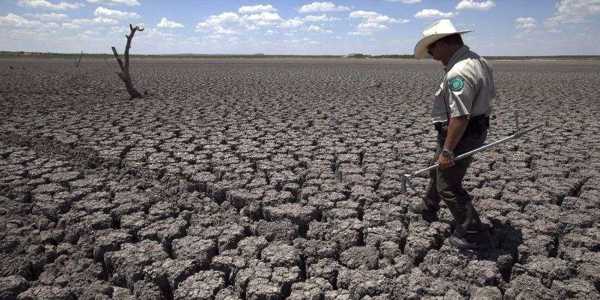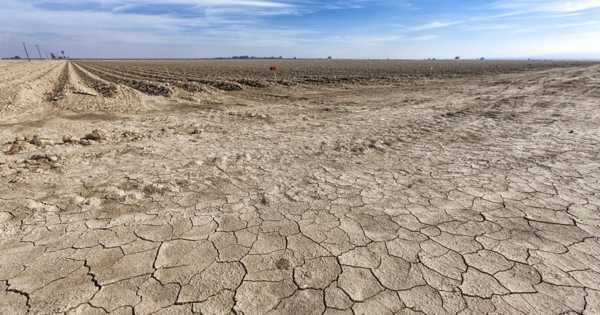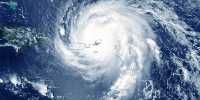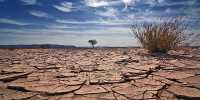According to a new study of cave rocks in northern Laos, a megadrought lasting more than 1000 years may have plagued Southeast Asia 5000 years ago, causing dramatic shifts in regional civilizations. According to the researchers, the drought began when the drying of the distant Sahara Desert disrupted monsoon rains, causing droughts to spread throughout Asia and Africa.
A large region of water in the south Pacific Ocean has reached significantly higher temperatures than the surrounding water, triggering a chain of events that has resulted in a decade-long megadrought in Chile.
According to research published on Thursday in the Journal of Climate, the so-called “Southern Blob” is linked to changing wind patterns and rising temperatures caused by rampant fossil fuel combustion and, as a result, has lasted years longer than a naturally occurring blob would have. Experts have warned Reuters that the severe megadrought it is causing in Chile could even bring down entire civilizations. In fact, they claim that this has already occurred in human history.
A megadrought that lasted more than 1000 years may have plagued Southeast Asia 5000 years ago, setting up dramatic shifts in regional civilizations, suggests a new study of cave rocks in northern Laos.
“I find it very concerning that human-caused climate change is exacerbating the severity of megadroughts,” said Andreas Prein, a climate scientist at the National Center for Atmospheric Research.
“Such (extreme) droughts are responsible for the collapse of historic civilizations like the Mayas or the Ming Dynasty,” Prein continued, “and can destabilize modern cultures like the one seen recently in Syria.”
For years, archaeologists studying mainland Southeast Asia—a region that includes modern-day Cambodia, Laos, Myanmar, Malaysia, Thailand, and Vietnam—have been perplexed by what they call “the missing millennia,” a time period with little evidence of human settlements spanning roughly 6000 to 4000 years ago. Joyce White, an archaeologist at the University of Pennsylvania and a co-author on the new paper, says she and others had long assumed this was because researchers hadn’t yet pinpointed where people of the era lived. She now believes the settlements may have vanished as a result of a megadrought that devastated their populations and drove them to seek water elsewhere.
White and her colleagues investigated stalagmites in Tham Doun Mai, a cave in northern Laos, to recreate the climate of the time. Stalagmites are tapering pillars of rock that rise from cave floors; they gradually grow taller as mineral-rich water drips from cave ceilings, which occurs frequently after rainfall. Researchers can determine not only the age of the slowly deposited rock, but also how wet it was at the time, by analyzing the content of the slowly deposited rock.

Our Bad
Natural occurrences of oceanic blobs are possible. However, the size, severity, and duration of this blob, which is wider than the continental United States and 1.5 degrees Celsius warmer than it was in 1980, point directly to climate change and humanity’s disastrous environmental impacts.
“We know the blob is natural, but it has been energized by climate change… Climate change is to blame for why it [has] lasted so long and is so intense, according to lead study author and University of Chile in Santiago climate scientist Rene Dario Garreaud.
That is not to say that every blob will have such a devastating human impact — Chile has had to deliver water to 400,000 people this year alone — but the Southern Blob is in the perfect location to cause havoc. Unfortunately, as climate change continues, more of these warm blobs may form and last longer.
The fact that a swath of warm water, even one spanning more than 8 million kilometers, can affect conditions thousands of kilometers away in Chile demonstrates how far-reaching climate change will be, according to ocean and climate scientist Dillon Amaya of the University of Colorado in Boulder.
“We need to be aware of the changes that are occurring in global climate thousands of miles away,” Dillon Amaya, a climate scientist at the University of Colorado in Boulder, told Reuters. “Everything is linked.”
According to the authors, the region’s two most important water reservoirs, Lake Powell and Lake Mead, have both shrunk dramatically due to the drought. Wildfires are spreading across the region.
“There are over ten times more forest area burns in any given year than we would have expected in any given year 40 years ago,” Dr. Williams said. Groundwater, or water held underground in aquifers, has helped to mitigate the effects of the drought.















